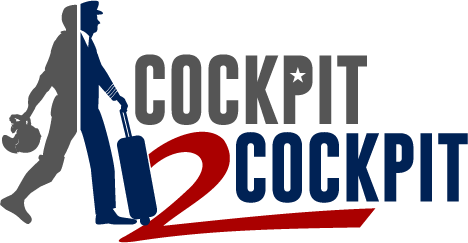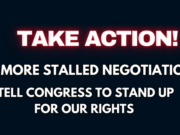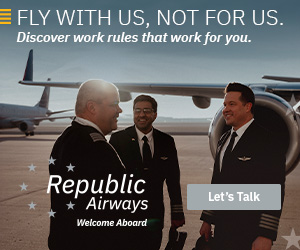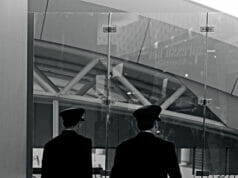
We focus so much on the efforts required to secure and prepare for an airline interview, but have you thought about what happens after the interview is over? Are you just going to sit by the phone waiting for it to ring? It may surprise you to know that your post-interview efforts can be every bit as important as your pre-interview efforts. Here are some things to consider that will at least keep you busy so your eyes don’t fall out of your head from staring at the phone too hard.
A “Thank You” Goes a Long Way
As you go through your interview process, try to collect names and business cards of the key personnel with whom you interact, including those from the HR department, administrative personnel, interviewers, and anyone else who played a role in organizing and conducting the logistics of the day. You’ll also want to get the mailing address for the pilot-hiring department. I highly recommend that you send thank-you notes after the interview. Right now you’re probably asking yourself, “Do I really need to do that?” Yes, you do!
There is a recurring theme in my book Cockpit to Cockpit: The airlines have plenty of qualified applicants. They are looking for the pilot willing to go the extra mile. Thank-you notes are part of the extra mile. They can also partially make up for an interview question or two that may not have gone as well as you would have liked. You may have even bombed a response to one of their questions, or the interviewers picked up on something that came off the wrong way. The personal thank-you note could help them look past a few interview hiccups.
You can write one note to the entire interview and HR team, or you can really knock their socks off by writing individual notes to each team member. If you take the former approach, at least try to address each team member by name somewhere in the thank-you note. There is a good sample thank-you note you can use as a guide included with the Cockpit to Cockpit support package products available at www.Cockpit2Cockpit.com.
 The Pilot Hiring Board
The Pilot Hiring Board
Most major airlines use a pilot hiring board to make the final hiring decision. (Delta and FedEx are exceptions, and there may be others.) When the dust settles after the interview, the interview team will collect their notes about your interview performance along with their recommendation and forward it to the pilot hiring board. Generally speaking, a pilot hiring board will be convened every four to six weeks to make a final hiring decision on all the pilot interviews since the last hiring board.
The pilot hiring board usually consists of the pilot hiring manager, key HR personnel, and the chief pilot or assistant chief pilot from each domicile. You may think that beyond the thank-you notes there is nothing else you can do after the interview to affect the chances of being hired…but you would be wrong about that.
Picture this: The pilot hiring board convenes their meeting. In front of them, they have a file on each of the pilot candidates to be considered for that board. The leader of the team calls out the first pilot candidate’s name being considered. “Okay, first up is Holly Hulahan. Looks like most of her interview went fairly well, but she was a little weak on the line oriented interview (LOI) portion, in terms of cockpit resource management and communicating the plan. Anyone have any additional information on her?” One of the domicile chief pilots responds, “Yeah, I had two of my pilots personally go to bat for Holly. They came to my office with hard-copy, signed recommendation letters and had nothing but positive praise for her flying skills and personality.” Two other domicile chief pilots then tell similar stories. The board discusses and decides that they can overlook the slightly below average LOI performance based on the testimony of those who know Holly best and have worked with her in the past.
Now contrast that scenario with candidate number two. The leader of the pilot hiring board continues, “All-right, next we have Bob Bagadonuts. Some of Bob’s interview responses came off a little arrogant. Anyone have any additional information on Bob?” Crickets, crickets … nobody speaks up for Bob. Therefore the pilot hiring board decides to give Bob a thanks-but-no-thanks (TBNT).
Hopefully these examples demonstrate how important it can be to have as many people as possible at the pilot hiring board show up prepared to go to bat for you. So how do you do that? First, make sure you ask during your interview when your pilot hiring board will take place. They may not give you an exact date, but they should be able to narrow it down to plus-or-minus a week. Next, call each of your internal recommendation references and tell them when you expect your pilot hiring board will take place. They probably want to hear how your interview experience went anyway. Ask them to hand-walk a hard copy of your recommendation letter and/or résumé to their domicile chief pilot and go to bat for you. If they can’t get to the chief pilot in person, at least ask them to send an email with an electronic copy of the LOR and/or résumé to their domicile chief pilot. Ideally, you want to find someone you know at each domicile to go to their chief pilot on your behalf in order to maximize the number of chief pilots going to bat for you at the pilot hiring board. I realize that’s probably unrealistic but do your best to cover as many domiciles as possible.
 Getting the Call
Getting the Call
The time between the airline interview and getting “the call” can be agonizing. Every time the phone rings and you see an unfamiliar number, your heart will skip a beat. “Could this be it?”
When you do get the call, it’s a huge emotional release. You have worked very hard to fulfill this dream, and it’s finally coming true. Congratulations! Try not to let your voice crack like a thirteen-year-old boy. There are a few key questions to ask before you hang up the phone to call your spouse, parents, and others. Ask what the next step is in the process. Often there are more forms to complete and more information needed by the airline. You will also want to ask when you will receive a training-class date. Sometimes that class date is many months in the future. If you are available sooner than that, make sure to tell them you are available on short notice in case any vacancies open up in earlier class dates (which happens more often than you would think). I know several pilots who were able to move up their start date as much as four months because they spoke up on the initial call. That can translate to an increase in several hundred seniority numbers!
If you have really kicked butt and dedicated yourself to the “getting a job is a full-time job” concept (another recurring theme from Cockpit to Cockpit), you may even get multiple job offers. So, if you’re one of those lucky guys or gals who get hired by multiple airlines, what do you do when you get the second or third offer? Obviously you’re going to take the first offer because you have nothing else in hand yet. If the first offer comes from your top choice airline, you might be tempted to politely turn down andy subsequent offers. Whoa, whoa, whoa, Rambo…not so fast!
Nothing is certain until you have a class date! My business-savvy wife would take it one step further and say nothing is certain until the first paycheck clears the bank. My first airline conditional job offer (CJO) from airline X happened in late December of 2014. Airline X told me I was officially in the pool but couldn’t give me a specific training class date. Unfortunately, I didn’t know that I was in the bottom of the deep end of the pool. They told me to expect training in the spring of 2015. They didn’t offer me a training class until May 2015. I waited almost six months from interview to receiving an official job offer. If that sounds like a long time, I know friends who were treading water in the pool for over a year with two different legacy airlines. There are many pilots in that situation right now.
There are several factors related to when you will start training with an airline, but the bottom line is that it’s all about the needs of the airline, not your need for a job. It depends on how many were hired before you and how many they can put through training in a given time period. For various reasons, the major airlines sometimes bite off more than they can chew. In the cases mentioned above, the airline hired more pilots than their training pipeline could handle at the time. During that waiting period, you are not yet an airline employee. That means that if there is a sudden economic downturn, you could lose that job offer (hence the term “conditional” job offer).
So back to the original question: What do you do when you get the second or third offer? I recommend you say yes! Even if you think you won’t end up at that airline, just say yes unless you already have a firm training date from your preferred airline and you are confident it won’t be changed or taken away. You can always call them back later and change your mind, but it usually doesn’t work the other way around (i.e., you can’t say no initially and then call back later and say yes). That said, if your personal financial situation is such that you can ride out six months to a year without a steady paycheck, then you might consider just waiting in the pool with your first offer.
If you do say yes on the initial call, try to use some professionalism when you finally decide to burn that bridge and go with another offer. Professional courtesy dictates that you should give a company at least two weeks’ notice. That gives the airline a chance to fill the training slot you are vacating.
Summary
The work doesn’t stop when the interview is over. You have to apply maximum effort all the way until you have a CJO and a training date. A thank-you note to the HR team is a great way to put the icing on the cake after you’ve dazzled them in the interview and it just might be the tie breaker if you didn’t.
If the airline with which you interviewed uses a pilot hiring board, be sure to ask during the interview when is the approximate date the board will take place. Use your internal references and contacts to go to bat for you with their domicile chief pilots who will likely be members of the pilot hiring board.
Lastly, when you finally get the call you’ve been awaiting so long, don’t forget to ask what the next steps are and when you can expect a class training date. If you’re available earlier than the class date they give you, be sure to let them know on the initial phone call. Also, consider what you will do if you get offers from multiple airlines.
Happy hunting my friends, I look forward to seeing you on the line.























































